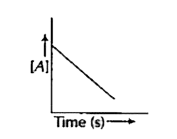Differentiate between rubbers and plastics on the basis of intermolecular forces.Solution in Odia
Rubber is a natural polymer which possess elastic properties. It is a linear polymer of isoprene (2-methyl-1,3-butadiene).
In natural rubber, cis-polyisoprene molecules consists of various chains held together by weak van der Waals. interaction and has coiling structure.
So it can be stretched like a spring and it regain its original shape after force is released.

Plastics are synthetic or semi-synthetic polymers of organic compounds which possess intermediate intermolecular forces of attraction. It has linear, structure that can be moulded but cannot regain its original shape after stretching is over.
Topper's Solved these Questions
- SAMPLE PAPER 1 BOOK - ARIHANT PUBLICATIONCHAPTER - SAMPLE PAPER 1 EXERCISE - GROUP C
14 Videos
- SAMPLE PAPER 1 BOOK - ARIHANT PUBLICATIONCHAPTER - SAMPLE PAPER 1 EXERCISE - GROUP A
7 Videos
- QUESTION PAPER 2019BOOK - ARIHANT PUBLICATIONCHAPTER - QUESTION PAPER 2019EXERCISE - GROUP C
11 Videos
- SAMPLE PAPER 4 BOOK - ARIHANT PUBLICATIONCHAPTER - SAMPLE PAPER 4 EXERCISE - GROUP C
7 Videos
Similar Questions
A strip of nickel metal is dipped in a 1 molar solution of Ni(NO3)2 and a strip of silver metal is dipped in a 1 molar solution of AgNO3. An electrochemical cell is created when the two solutions are joined by salt bridge and two strips are joined by wire to a voltmeter.
Answer the following questions.
Write the balanced equation for the overall cell reaction and calculate the cell potential.
View SolutionWhich noble gas is used in atomic reactor ?
View SolutionWhat are oil in water and water in oil type of emulsions ? Give one example of cach type.
View SolutionConsider the reaction, Ak−−→P. The change in the concentration of A with time is shown in the following plot:

(a) Derive the expression for the time required for the completion of the reaction.
(b) Predict the order of the reaction.
View SolutionDifferentiate between electric and magnetic forces.
View SolutionDifferentiate between rubbers and plastics on the basis of intermolecular forces.
View Solutionपरमाणु मॉडल के आधार पर प्रतिचुम्बकत्व एवं अनुचुम्बकत्व में अन्तर लिखिए |
View SolutionDifferentiate between 'Delegation' and 'Decentralisation' on the basis of 'Freedom of action'
View SolutionDifferentiate between Authority' and Responsibility' on the basis of 'Origin'
View SolutionDifferentiate between Formal and Informal organisation on the basis of 'Flow of communication'.
View SolutionDifferentiate between rubbers and plastics on the basis of intermolecular forces.
View SolutionDifferentiate between physical and chemical adsorption on the basis of the forces involved in adsorption.
View SolutionDifferentiate between rubbers and plastics on the basis of intermolecular forces.
View SolutionDifferentiate between rubbers and plastics on the basis of intermolecular forces.
View Solutionअंतराआण्विक बलों के आधार पर रबर और प्लास्टिक में अन्तर बताइए।
View SolutionDifferentiate between real and pseudo force.
View Solution
